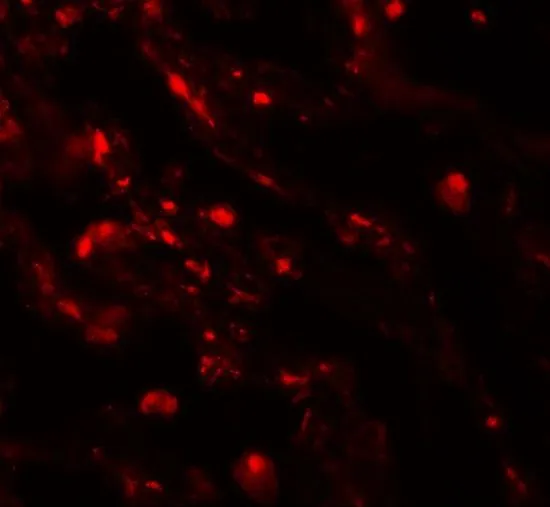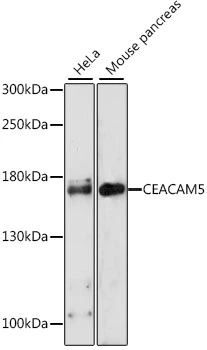CD66e antibody
GTX19128
ApplicationsWestern Blot
Product group Antibodies
TargetCEACAM5
Overview
- SupplierGeneTex
- Product NameCD66e antibody
- Delivery Days Customer9
- Application Supplier NoteWB: 1:500. *Optimal dilutions/concentrations should be determined by the researcher.Not tested in other applications.
- ApplicationsWestern Blot
- CertificationResearch Use Only
- ClonalityPolyclonal
- ConjugateUnconjugated
- Gene ID1048
- Target nameCEACAM5
- Target descriptionCEA cell adhesion molecule 5
- Target synonymsCD66e, CEA, cell adhesion molecule CEACAM5, carcinoembryonic antigen related cell adhesion molecule 5, meconium antigen 100
- HostChicken
- IsotypeIgY
- Protein IDP06731
- Protein NameCarcinoembryonic antigen-related cell adhesion molecule 5
- Scientific DescriptionThe CEA gene family belongs to the immunoglobulin gene superfamily (IgSF) and comprises a large number of genes. The cell surface associated CEA proteins are heavily glycosylated, abundantly expressed and multifunctional. The human carcinoembryonic antigen (CEA) family can be divided into two subgroups according to the means of anchorage of member glycoproteins to the cell membrane: glycophosphatidyl inositol (GPI) linkage and transmembrane linkage. GPI-linked CEA family members include CEA (CD66e), non-specific cross-reacting antigen (NCA, CD66c), CEA gene-family members 6 (CGM6, CD66b) and 2 (CGM2). Transmembrane-linked members include biliary glycoprotein (BGP, Human C-CAM-L and C-CAM-S, CD66a), CGM1(CD66d) and CGM7. Recent evidence suggests the GPI-linked members tend to be up-regulated in human tumors, whereas the transmembrane-linked members tend to be down-regulated.
- Storage Instruction-20°C or -80°C,2°C to 8°C
- UNSPSC12352203



![IHC-P analysis of human bowel tissue using GTX01863 CD66e antibody [12-140-10]. Note cytoplasmic staining of epithelial cells.](https://www.genetex.com/upload/website/prouct_img/normal/GTX01863/GTX01863_20200811_IHC-P_24_w_23053121_712.webp)
![IHC-P analysis of colorectal carcinoma tissue using GTX80201 CD66e antibody [CB30]. Diultion : 10microg/ml](https://www.genetex.com/upload/website/prouct_img/normal/GTX80201/GTX80201_20191025_AP_003_422_w_23061322_861.webp)